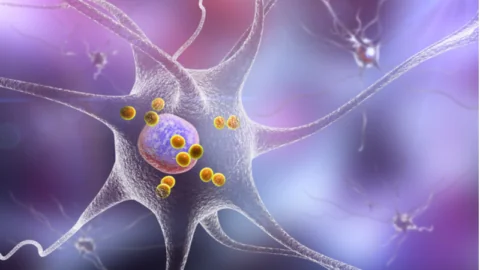July 14, 2025
Researchers have discovered how α-synuclein (α-syn), a key protein in Parkinson's disease and Lewy body dementia, leads to inflammation and disruption of the axons in the brain. Failure of the barrier Unlike other organs, the brain is heavily protected from many compounds in the bloodstream in order to prevent damage, with a unique combination of...
July 29, 2024
In Aging, a pair of researchers has published a perspective connecting fat (lipid) accumulation and cellular senescence in neurons to Parkinson's disease. α-syn, but not just α-syn Parkinson's disease is characterized by the loss of a specific population of neurons: the dopaminergic neurons in the substantia nigra, a part of the brain that governs movement...
January 15, 2024
A new paper elaborates on how and why microglia fail to clean up the α-synuclein protein of Parkinson's disease, gradually making the disease worse. The aggregation of Parkinson's Loss of ProteostasisThe loss of proteostasis is the failure of the protein-building machinery of the cell and the accumulation of misfolded proteins, which is one of the...
September 19, 2022
In the Journal of Inflammation, researchers from Johns Hopkins University have published a detailed review of the relationship between brain inflammation and the principal diseases of dementia. A focus on genetics and environment One out of twenty Americans over 85 have Parkinson's disease [1], and seven out of twenty have Alzheimer's [2]. While genes are...
August 08, 2022
A team of researchers publishing in Nature Communications has described nanobodies that can destroy the α-synuclein aggregates that characterize Lewy bodies, which are associated with dementia and Parkinson's disease [1]. What are nanobodies? Traditional antibody therapies, while promising in some studies, are too large to enter cells in order to affect the aggregates there [2]....
January 13, 2022
A study published in Cell Reports has found α-synuclein, the fundamental protein of Parkinson's disease, to be critical in immune function. The gut-brain axis as a channel for disease Parkinson's disease, which causes damage to the portion of the brain responsible for movement, is widely known to be caused by the aggregation of α-synuclein. This...






